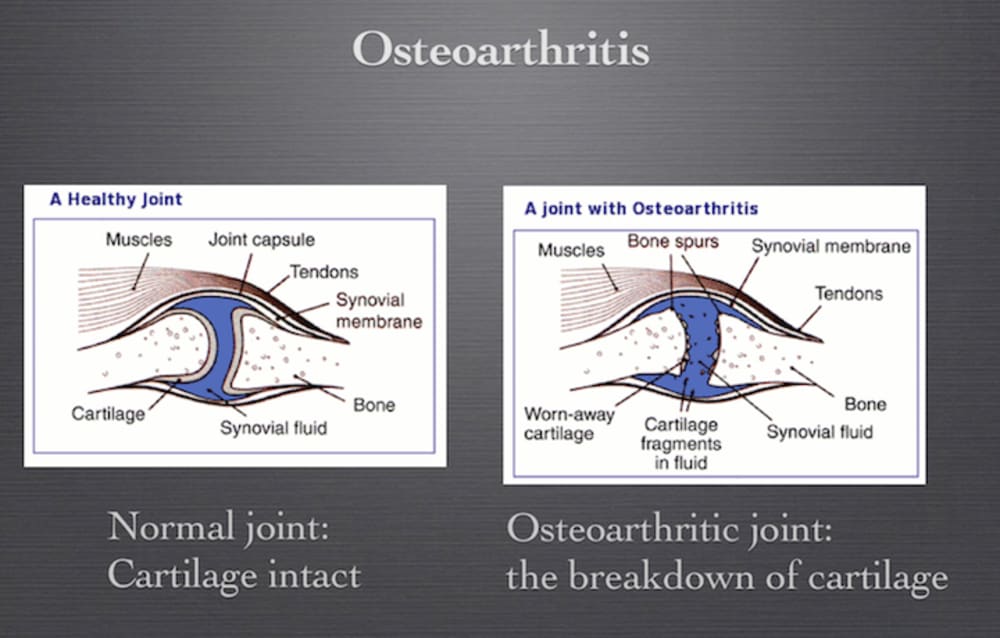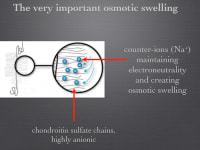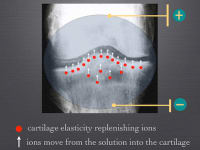

The present invention, patent number # 8,423,148 issued April 16, 2013, inventor Michael Lytinas, relates to treating cartilage defects. Specifically, the present invention relates to a method for treating cartilage defects in osteoarthritis (photo) and cartilage injuries by moving ions into a collagen matrix of the defective cartilage using electricity.
Human joint surfaces are covered by articular cartilage, a low friction, durable material that distributes mechanical forces and protects the underlying bone. Injuries to articular cartilage are common, especially in the knee. Data from the Center for Disease Control (CDC) and clinical studies have suggested that approximately 100,000 articular cartilage injuries occur per year in the United States. Such injuries occur most commonly in young active people and result in pain, swelling, and loss of joint motion. Damaged articular cartilage does not heal. Typically, degeneration of the surrounding uninjured cartilage occurs over time resulting in chronic pain and disability. Cartilage injuries therefore frequently lead to significant loss of productive work years and have enormous impact on patients' recreation and lifestyle.
This technology differs from what is currently available in the market on the fact that it brings cartilage back to its previous, healthy stage. The current osteoarthritis therapeutic regiment includes drugs for pain alleviation, injections of hyaluronic acid or other lubricant type substances inside the joint to ease the function of the joint and finally surgery and joint replacement.
The U.S.A. paid $128 billion in 2003 for arthritis related costs, according the the CDC. From 2005 to 2015 there were 8 million new cases. Up to 2030, in the US alone, there will be 72 million people suffering from osteoarthritis.
This technology works by forcing ions back into the cartilage. The elasticity that the articular cartilage offers is due to the osmotic swelling (photo) of the chondroitin sulphate chains within the cartilage. These chains attract counter ions Na+ to maintain electroneutrality and this creates the osmotic swelling which translates into elasticity of the cartilage in humans. In osteoarthritis these ions are lost and with this technology we try to put them back into their place -to replenish the cartilage- and restore the elasticity of the cartilage and the normal function of the joint.
The clinical part of this technology (photo) includes a probe that contains a solution with free ions and touches the defective cartilage part. By applying electricity the ions move from the solution into the cartilage replenishing it with fresh ions and restoring its function.
The experiments were done at Beth Israel Hospital, Boston Massachusetts, at the Martha Gray lab, under her guidance and within Health Science Technology, a Harvard-MIT joint venture.
-
Awards
-
 2015 Medical Honorable Mention
2015 Medical Honorable Mention -
 2015 Top 100 Entries
2015 Top 100 Entries
Like this entry?
-
About the Entrant
- Name:Michael Lytinas
- Type of entry:individual
- Patent status:patented








